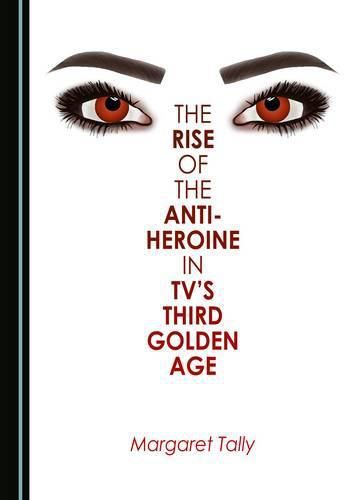Readings Newsletter
Become a Readings Member to make your shopping experience even easier.
Sign in or sign up for free!
You’re not far away from qualifying for FREE standard shipping within Australia
You’ve qualified for FREE standard shipping within Australia
The cart is loading…






This volume offers a stimulating perspective on the status of representations of a new kind of female character who emerged on the scene on US television in the mid-2000s, that of the anti-heroine. This new figure rivaled her earlier counterpart, the anti-hero, in terms of her complexity, and was multi-layered and morally flawed. Looking at the cable channels Showtime and HBO, as well as Netflix and ABC Television, this volume examines a range of recent television women and shows, including Homeland, Weeds, Scandal, How to Get Away With Murder, Veep, Girls, and Orange is the New Black as well as a host of other nighttime programs to demonstrate just how dominant the anti-heroine has become on US television. It examines how the figure has arisen within the larger context of the turn towards Quality Television , that has itself been viewed as part of the post-network era or the Third Golden Age of television where new forms of broadcast delivery have created a marketing incentive to deliver more compelling characters to niche audiences. By including an exploration of the historical circumstances, as well as the industrial context in which the anti-heroine became the dominant leading female character on nighttime television, the book offers a fascinating study that sits at the intersection of gender studies and television. As such, it will appeal to scholars of popular culture, sociology, cultural and media studies.
$9.00 standard shipping within Australia
FREE standard shipping within Australia for orders over $100.00
Express & International shipping calculated at checkout
This volume offers a stimulating perspective on the status of representations of a new kind of female character who emerged on the scene on US television in the mid-2000s, that of the anti-heroine. This new figure rivaled her earlier counterpart, the anti-hero, in terms of her complexity, and was multi-layered and morally flawed. Looking at the cable channels Showtime and HBO, as well as Netflix and ABC Television, this volume examines a range of recent television women and shows, including Homeland, Weeds, Scandal, How to Get Away With Murder, Veep, Girls, and Orange is the New Black as well as a host of other nighttime programs to demonstrate just how dominant the anti-heroine has become on US television. It examines how the figure has arisen within the larger context of the turn towards Quality Television , that has itself been viewed as part of the post-network era or the Third Golden Age of television where new forms of broadcast delivery have created a marketing incentive to deliver more compelling characters to niche audiences. By including an exploration of the historical circumstances, as well as the industrial context in which the anti-heroine became the dominant leading female character on nighttime television, the book offers a fascinating study that sits at the intersection of gender studies and television. As such, it will appeal to scholars of popular culture, sociology, cultural and media studies.